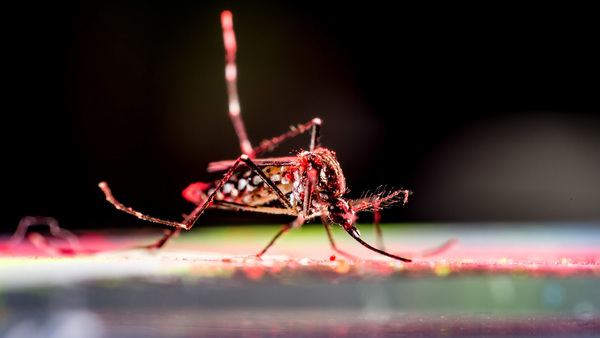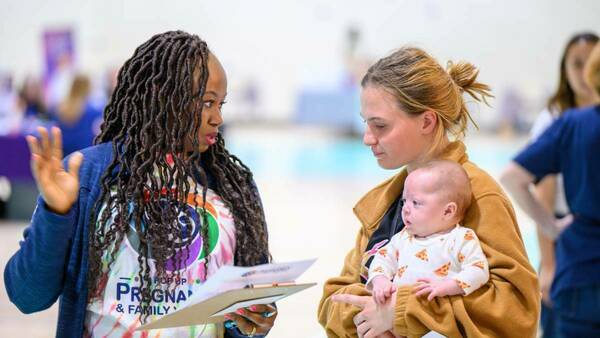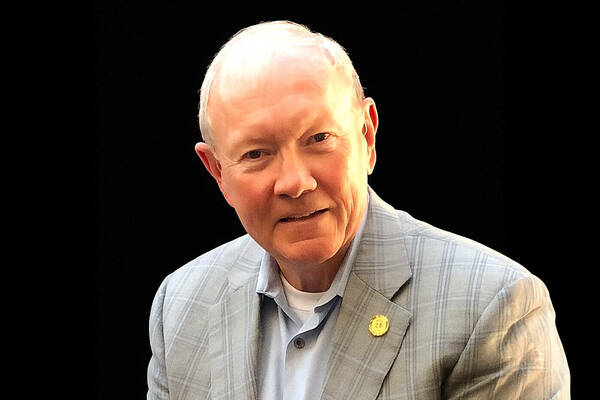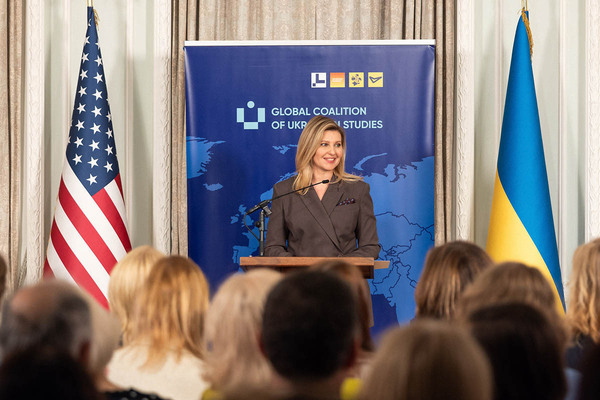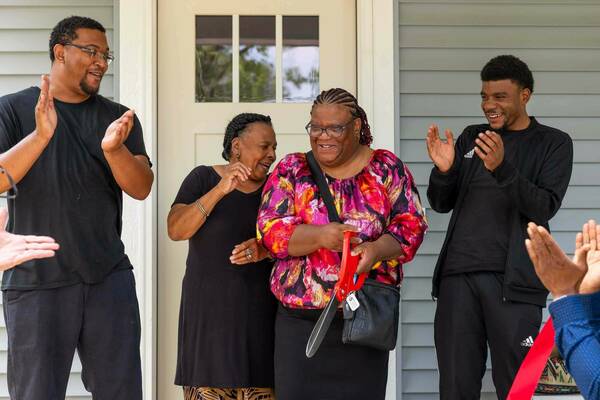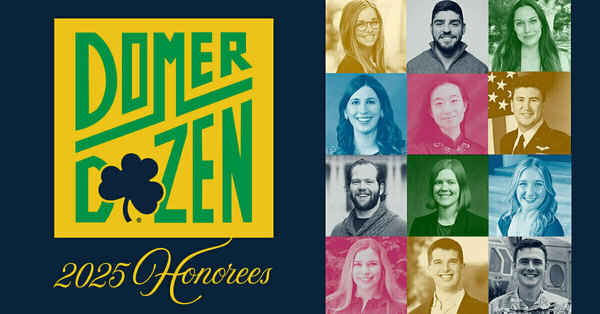‘Quiet eye’: Notre Dame psychologist identifies links between a steady gaze and elite performance
In his book on basketball great Bill Bradley, writer John McPhee proposed that Bradley’s greatest asset had little to do with speed, strength or agility. It had to do, McPhee proposed, with his eyes.
“His most remarkable natural gift ... is his vision,” McPhee observed. “During a game, Bradley’s eyes are always a glaze of panoptic attention.”
The work of University of Notre Dame researcher Matthew Robison suggests that McPhee may have been on to something. In a recent study supported by the U.S. Naval Research Laboratory and the Army Research Institute, Robison documented a phenomenon in eye movement — or “oculomotor dynamics” — that links a steady, focused gaze with superior levels of performance.

Robison, an assistant professor in the Department of Psychology, made the discovery thanks to the unique capabilities of his lab, which includes more than a dozen precision instruments for tracking eye movement and pupil dilation. These devices capture images of the eyes every four milliseconds, providing 250 frames per second.
This ultra-detailed look at the eyes allows Robison to “read” the complex language of minute eye movement. A slight wiggle in the eye, for example, can reveal that a study participant was distracted by a stimulus entering their field of vision — even though their facial expression never altered. Or a dilation of the pupil might indicate a participant is struggling to solve a complex math problem.
Recently, though, Robison has been most interested not in why our eyes move, but in why we might — or might want to — keep them still. He was inspired to investigate the meaning of a steady gaze by the work of applied sports psychologists helping athletes achieve high levels of performance.
“Sports psychologists regularly advise that if you're about to putt, pick a spot on the back of the golf ball and keep your eyes still there for a second or two. Then hit the ball,” Robison said. “Or, if you’re shooting a free throw in basketball, pick a spot on the rim and focus on it for a few seconds. Then shoot the free throw. The advice seems sound in many cases. But the causal pathway behind this phenomenon has not been thoroughly demonstrated or explained.”
Robison hypothesized that a steady gaze had to do with attention control and thus would lead to better performance not only in sports but also in almost any mentally demanding activity, whether it was comprehending a difficult passage of text, solving a complex problem, remembering new information or multitasking. To test his hypothesis, he recruited nearly 400 participants to perform a series of tasks in his lab over a two-hour period while their gaze was being recorded by eye trackers and pupilometers.
Robison found that, across the board, those participants who kept their gaze steady in the moments just before being called upon to complete a task performed with greater speed and with greater accuracy. Borrowing a term from sports psychologist Joan Vickers, Robison called this specific quality of gaze “quiet eye.” He said it is more than a lack of motion. Like Bradley’s gaze that so impressed McPhee, “quiet” eyes are not just still. They are focused — able to resist distractions and remain vigilant, ready and “awake.”
His work documenting quiet eye suggested another question for Robison to explore: Would it be possible to train individuals to perform better by training them not in the task itself but in developing a steadier gaze?
Thanks to new funding from the Office of Naval Research (ONR), Robison launched a new three-year project focused on answering that question. The funding is part of the ONR’s Young Investigator Award program, and Robison is one of just 25 awardees of the program over the past year. The funding will allow Robison to test new ways to train one’s gaze and to determine how far the effects of “quiet eye” reach.
“Our aim is to make the benefits of ‘quiet eye’ available to anyone who wants to learn them,” he said.
And while it will not immediately lead to Bill Bradley levels of basketball virtuosity, the benefits could be widespread. Robison hopes that “those who learn this skill are able, in turn, to sustain and control their attention, which will yield benefits for their performance in almost any complex or demanding task.”
Natalie Steinhauser, a program officer at the Office of Naval Research, said she looks forward to starting this new research that bridges two aspects of her Prepared Warfighter Portfolio. Her portfolio focuses on “understanding attention control and how it impacts warfighter performance” and “accelerating and innovating training approaches to maximize warfighter readiness.” This research, she said “brings those worlds together in hopes of training our naval warfighters to optimize their attention and, thus, performance.”
Robison’s research is one instance in a broad effort by Notre Dame researchers to explore the science of elite performance. To advance this effort, Notre Dame Research is partnering with Notre Dame Athletics to provide new facilities, infrastructure and funding. To learn more, contact sportsperformance@nd.edu or athleticsresearch-list@nd.edu.
Originally published by at research.nd.edu on March 24.
Contact: Tracy DeStazio, associate director of media relations, 574-631-9958 or tdestazi@nd.edu
Latest ND NewsWire
- Researchers deconstruct chikungunya outbreaks to improve prediction and vaccine developmentThe symptoms come on quickly — acute fever, followed by debilitating joint pain that can last for months. Though rarely fatal, the chikungunya virus, a mosquito-borne illness, can be particularly severe for high-risk individuals, including newborns and older adults. While the virus is common…
- Eck Institute investigator to strengthen postpartum care for Indiana mothersYenupini Joyce Adams, associate professor of the practice and maternal health lead for the Eck Institute for Global Health at the University of Notre Dame, is partnering with Beacon Health System to pilot a new, first-of-its-kind postpartum care model in the South Bend-Elkhart community.
- Gen. Martin Dempsey to speak at Notre Dame Forum event on ‘Hope, Global Stability and the Role of the United States’Gen. Martin Dempsey, the retired 18th chairman of the Joint Chiefs of Staff, will join University President Rev. Robert A. Dowd, C.S.C., for a fireside chat at 4 p.m. Friday (Oct. 10), as part of the 2025-26 Notre Dame Forum. The discussion, titled “Hope, Global Stability and the Role of the United States,” is part of the exploration of this year’s Notre Dame Forum theme, “Cultivating Hope.” It will take place in Rooms 215/216 of McKenna Hall and will also be livestreamed. The event is free and open to the public.
- University of Notre Dame joins the Global Coalition of Ukrainian StudiesThe University of Notre Dame has joined the Global Coalition of Ukrainian Studies after signing a memorandum of cooperation, formalized Sept. 24, at the Ukrainian Institute of America in New York City. Notre Dame joined four other American institutions that were also publicly welcomed to the coalition at this event: Arizona State University, Columbia University, Manor College and the Shevchenko Scientific Society.
- One year later, Inauguration Build a ‘dream come true’ for Habitat familiesOne year later, work on Inauguration Build 2024 is complete, offering shelter and so much more to five local families.
- Alumni Association and YoungND honor 2025 Domer DozenThe Notre Dame Alumni Association announced its 2025 Domer Dozen cohort, honoring 12 graduates ages 32 and younger for excellence in their contributions in learning, service, faith and work — the core pillars of the association’s mission.








